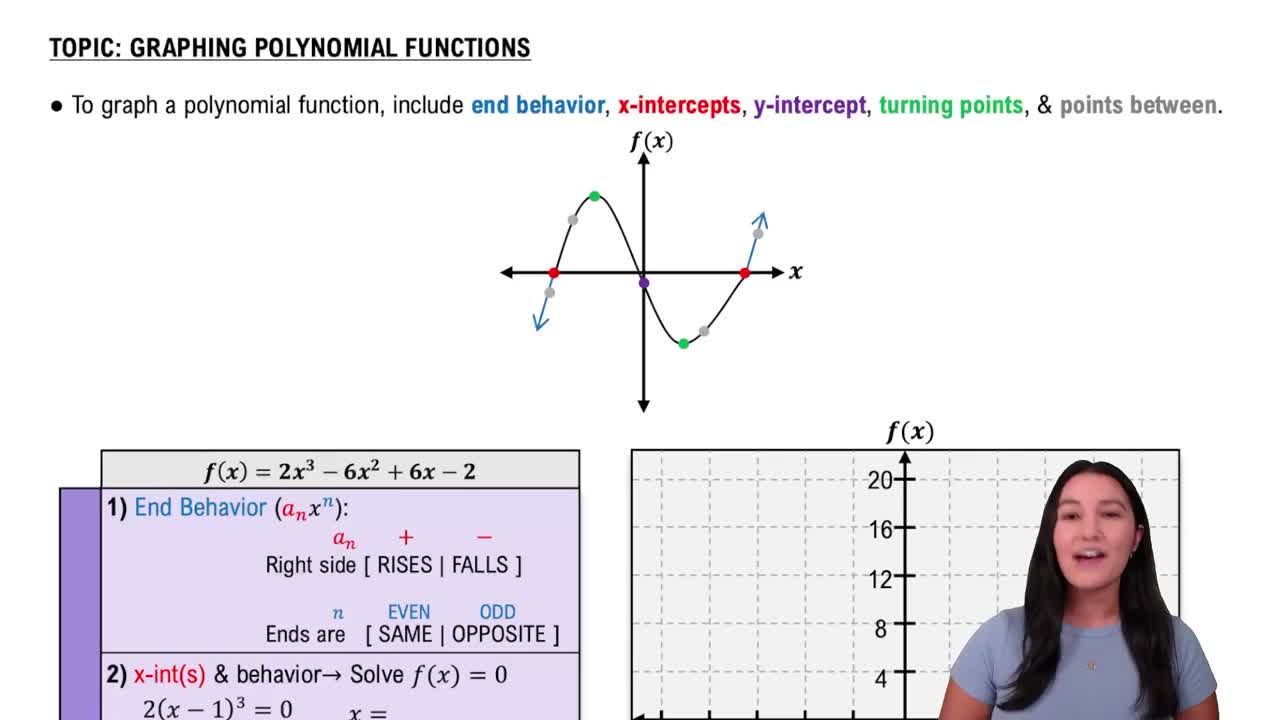Here are the essential concepts you must grasp in order to answer the question correctly.
Polynomial Functions
A polynomial function is a mathematical expression involving a sum of powers in one or more variables multiplied by coefficients. The general form of a polynomial in one variable is f(x) = a_n*x^n + a_(n-1)*x^(n-1) + ... + a_1*x + a_0, where 'n' is a non-negative integer and 'a_n' are constants. Understanding the structure of polynomial functions is essential for analyzing their behavior, including finding zeros and graphing.
Recommended video:
Introduction to Polynomial Functions
Finding Zeros
The zeros of a polynomial function are the values of 'x' for which f(x) = 0. These points are crucial as they indicate where the graph intersects the x-axis. To find the zeros, one can use methods such as factoring, the Rational Root Theorem, or synthetic division. Identifying these zeros helps in sketching the complete graph of the polynomial.
Recommended video:
Finding Zeros & Their Multiplicity
Graphing Polynomials
Graphing a polynomial involves plotting its zeros and analyzing its end behavior, which is determined by the leading term. The degree of the polynomial indicates the number of turns in the graph, while the sign of the leading coefficient affects whether the ends of the graph rise or fall. A complete graph includes all critical points, such as local maxima and minima, and provides a visual representation of the function's behavior across its domain.
Recommended video:
Graphing Polynomial Functions




